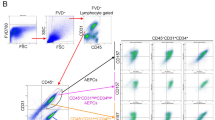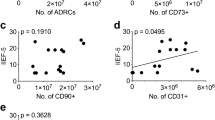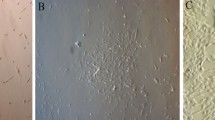Abstract
Blood-derived endothelial colony-forming cells (ECFCs) have robust vasculogenic potential that can be exploited to bioengineer long-lasting human vascular networks in vivo. However, circulating ECFCs are exceedingly rare in adult peripheral blood. Because the mechanism by which ECFCs are mobilized into circulation is currently unknown, the reliability of peripheral blood as a clinical source of ECFCs remains a concern. Thus, there is a need to find alternative sources of autologous ECFCs. Here we aimed to determine whether ECFCs reside in the vasculature of human white adipose tissue (WAT) and to evaluate if WAT-derived ECFCs have equal clinical potential to blood-derived ECFCs. We isolated the complete endothelial cell (EC) population from intact biopsies of normal human subcutaneous WAT by enzymatic digestion and selection of CD31+ cells. Subsequently, we extensively compared WAT-derived EC phenotype and functionality to bonafide ECFCs derived from both umbilical cord blood and adult peripheral blood. We demonstrated that human WAT is indeed a dependable source of ECFCs with indistinguishable properties to adult peripheral blood ECFCs, including hierarchical clonogenic ability, large expansion potential, stable endothelial phenotype, and robust in vivo blood vessel-forming capacity. Considering the unreliability and low rate of occurrence of ECFCs in adult blood and that biopsies of WAT can be obtained with minimal intervention in an ambulatory setting, our results indicate WAT as a more practical alternative to obtain large amounts of readily available autologous ECFCs for future vascular cell therapies.





Similar content being viewed by others
References
Lin Y, Weisdorf DJ, Solovey A, Hebbel RP (2000) Origins of circulating endothelial cells and endothelial outgrowth from blood. J Clin Invest 105(1):71–77
Ingram DA, Mead LE, Tanaka H et al (2004) Identification of a novel hierarchy of endothelial progenitor cells using human peripheral and umbilical cord blood. Blood 104(9):2752–2760
Melero-Martin J, Khan ZA, Picard A, Wu X, Paruchuri S, Bischoff J (2007) In vivo vasculogenic potential of human blood-derived endothelial progenitor cells. Blood 109(11):4761–4768
Melero-Martin J, De Obaldia ME, Kang S-Y et al (2008) Engineering robust and functional vascular networks in vivo with human adult and cord blood-derived progenitor cells. Circ Res 103(2):194–202
Au P, Daheron LM, Duda DG et al (2007) Differential in vivo potential of endothelial progenitor cells from human umbilical cord blood and adult peripheral blood to form functional long-lasting vessels. Blood 111(3):1302–1305
Traktuev DO, Prater DN, Merfeld-Clauss S et al (2009) Robust functional vascular network formation in vivo by cooperation of adipose progenitor and endothelial cells. Circ Res 104(12):1410–1420
Chen X, Aledia AS, Popson SA, Him L, Hughes CCW, George SC (2010) Rapid anastomosis of endothelial progenitor cell-derived vessels with host vasculature is promoted by a high density of cotransplanted fibroblasts. Tissue Eng A 16(2):585–594
Gulati R, Jevremovic D, Peterson TE et al (2003) Diverse origin and function of cells with endothelial phenotype obtained from adult human blood. Circ Res 93(11):1023–1025
Yoder MC, Mead LE, Prater D et al (2007) Redefining endothelial progenitor cells via clonal analysis and hematopoietic stem/progenitor cell principals. Blood 109(5):1801–1809
Rignault-Clerc S, Bielmann C, Delodder F et al (2012) Functional late outgrowth endothelial progenitors isolated from peripheral blood of burned patients. Burns. doi:10.1016/j.burns.2012.09.027. [Epub ahead of print]
Stroncek JD, Grant BS, Brown MA, Povsic TJ, Truskey GA, Reichert WM (2009) Comparison of endothelial cell phenotypic markers of late-outgrowth endothelial progenitor cells isolated from patients with coronary artery disease and healthy volunteers. Tissue Eng A 15(11):3473–3486
Thill M, Strunnikova NV, Berna MJ et al (2008) Late outgrowth endothelial progenitor cells in patients with age-related macular degeneration. Invest Ophthalmol Vis Sci 49(6):2696–2708
Bompais H, Chagraoui J, Canron X et al (2004) Human endothelial cells derived from circulating progenitors display specific functional properties compared with mature vessel wall endothelial cells. Blood 103(7):2577–2584
Yang J, Chang E, Cherry AM et al (1999) Human endothelial cell life extension by telomerase expression. J Biol Chem 274(37):26141–26148
Hur J, Yoon C-H, Kim H-S et al (2004) Characterization of two types of endothelial progenitor cells and their different contributions to neovasculogenesis. Arterioscler Thromb Vasc Biol 24(2):288–293
Ingram DA, Mead LE, Moore DB, Woodard W, Fenoglio A, Yoder MC (2005) Vessel wall-derived endothelial cells rapidly proliferate because they contain a complete hierarchy of endothelial progenitor cells. Blood 105(7):2783–2786
Yoder MC (2010) Is endothelium the origin of endothelial progenitor cells? Arterioscler Thromb Vasc Biol 30(6):1094–1103
Kern PA, Knedler A, Eckel RH (1983) Isolation and culture of microvascular endothelium from human adipose tissue. J Clin Invest 71(6):1822–1829
Szöke K, Beckstrøm KJ, Brinchmann JE (2012) Human adipose tissue as a source of cells with angiogenic potential. Cell Transplant 21(1):235–250
Lin R-Z, Moreno-Luna R, Zhou B, Pu WT, Melero-Martin J (2012) Equal modulation of endothelial cell function by four distinct tissue-specific mesenchymal stem cells. Angiogenesis 15(3):443–455
Lin R-Z, Dreyzin A, Aamodt K et al (2011) Induction of erythropoiesis using human vascular networks genetically engineered for controlled erythropoietin release. Blood 118(20):5420–5428
Pittenger MF, Mackay AM, Beck SC et al (1999) Multilineage potential of adult human mesenchymal stem cells. Science 284(5411):143–147
Schechner JS, Nath AK, Zheng L et al (2000) In vivo formation of complex microvessels lined by human endothelial cells in an immunodeficient mouse. Proc Natl Acad Sci USA 97(16):9191–9196
Nör JE, Peters MC, Christensen JB et al (2001) Engineering and characterization of functional human microvessels in immunodeficient mice. Lab Invest 81(4):453–463
Crisan M, Yap S, Casteilla L et al (2008) A perivascular origin for mesenchymal stem cells in multiple human organs. Cell Stem Cell 3(3):301–313
Acknowledgments
We thank Drs. Kyu-Tae Kang and Joyce Bischoff (Vascular Biology Program, Boston Children’s Hospital) for kindly providing some pbECFCs. This work was supported by a National Institutes of Health Grant (R00EB009096, J. M.-M).
Conflict of interest
The authors have declared that no conflict of interest exists.
Author information
Authors and Affiliations
Corresponding author
Additional information
Ruei-Zeng Lin and Rafael Moreno-Luna contributed equally to this study.
Electronic supplementary material
Below is the link to the electronic supplementary material.
Rights and permissions
About this article
Cite this article
Lin, RZ., Moreno-Luna, R., Muñoz-Hernandez, R. et al. Human white adipose tissue vasculature contains endothelial colony-forming cells with robust in vivo vasculogenic potential. Angiogenesis 16, 735–744 (2013). https://doi.org/10.1007/s10456-013-9350-0
Received:
Accepted:
Published:
Issue Date:
DOI: https://doi.org/10.1007/s10456-013-9350-0




